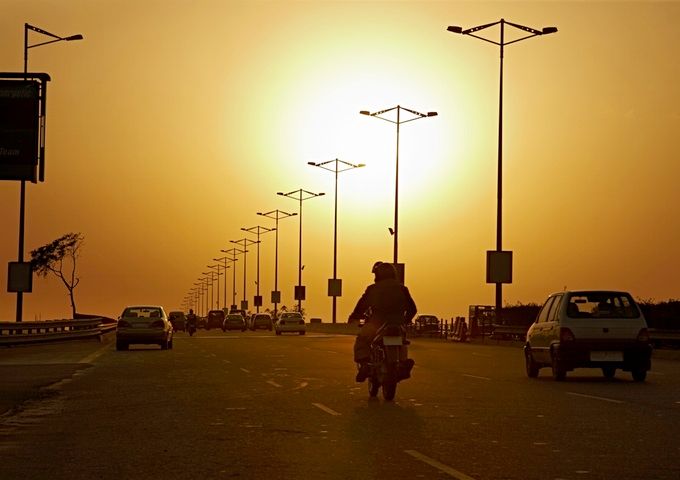India: From present participle to past participle of “Rise”
The world is reeling. It all started in 2008 with the subprime crisis in the US, which spared no corner of the globe, followed by the fall of the PIGS economies. Later, when the world was waking up to the recovery call, the Middle East fell into turmoil and a tsunami struck Japan. To add to the fire, S&P downgraded the US’s credit rating from AAA to AA+.
Now, the world is slowly turning its head towards the east. China’s low-cost manufacturing edge and India’s IT expertise and burgeoning spending class have yielded a very different experience of the global crisis.
Yes, India is rising! We have to gear up for a drive from the present participle of “Rise” to the past participle. Here’s how:

Emancipate India:
Corruption: The struggle to approve the anti-corruption Jan Lokpal bill demonstrates that India is ruled by bureaucracy rather than true democracy. India critically needs another dose of 1991-style liberalization. Reform acts are old enough now to dust off and amend. For instance, the Land Acquisition Act of 1894 still fosters bribery despite many amendments. Look at the troubles faced by Posco, a South Korean steel company—despite offering unprecedented FDI, it took them years to enter India.
Security: As internal problems heat up, external tensions seem constantly at boiling point. Is India surrounded by guns ready to fire? Tension with Pakistan is a never-ending story, and border conflict with China means that Indian citizens need permission to enter Arunachal Pradesh. China is slowly building rapport with our neighbors through FDI—it has pumped $1.5 billion into Hambantota, Sri Lanka, alone. Trust-building actions like FDI or helping neighbors develop through tourism can help turn down the external heat.
Energize India:
Humans need energy—and so do factories, offices, vehicles, and homes. The form might differ—food, oil, electricity—but the supply of energy in all its forms is crucial for India’s growth.
Nutrition: Already the second-most populous country in the world and growing fast, India is home to one third of the world’s hungry. Roti, makaan, and kapda are not enough. How can a child learn if she is hungry? Mid-day meals at school were supposed to be the answer, but the lunchbowls are leaking because of corruption.
We are the world’s second largest producer of rice and wheat, but we prolong our hunger story by wasting Rs 58,000 crore of agricultural products every year. A committee of the Warehousing Development &Regulatory Authority (WRDA) proposes privatization to decrease the whopping food wastage and tame inflation.
While Vidharbha in Maharashtra is stuck in famine, the Kosi River in Bihar is flooding. A project to connect rivers across the length and breadth of India could erase flood and famine, not to mention generating lakhs of jobs in all corners. But this is still a dream because of political drama.
Power: Power generation is managed independently by states, with little private participation. Despite having the world’s fifth largest coal reserve, India suffers frequent coal shortages that interrupt power production.
There is a tremendous opportunity for power production from India’s large waste generation. Instead of being treated and disposed of, waste should be considered a huge resource for producing power. We can look to pioneers like Himachal Pradesh (using plastic to pave roads) and Gyanesh Pandey, CEO of Husk Power Systems (using biomass to electrify rural India).
Educate India:
The “demographic dividend” has been hailed as India’s winning edge, with around 43% of the population falling into the working-age group of 15-59. The percentage is expected to rise to 65% by 2035 and taper to 61% in 2050. But this will be an advantage only if the whopping young population is educated and employed at the right time.
Progress comes too slowly. The adult literacy rate stood at 48.2% before the 1991 liberalizations; after 20 years, it has reached only 68.3%, well short of the 2010 target of 80%. Rural education faces stern challenges including accessibility, teacher absenteeism, a student-teacher ratio of 34:1 far behind international standards, and the lack of basic amenities like toilets, blackboard, and sometimes even classrooms. India should adopt a Public Private Partnership model to build high-quality schools in rural India to attract students and retain them.
IITs and IIMs have amply demonstrated India’s ability to nurture top talent, but the 2011QS World University Rankings lists only 11 Indian universities in the Top 200 compared to China’s 40. The 2011 Financial Times Global MBA Ranking only listed two Indian programs in the top 100.Indianhigher education needs a jumpstart to win an edge and sustainably develop talent. Singapore sets a good example: it has invited institutions like INSEAD to setup campuses and encourages world renowned institutes to tie up with local ones.
Entrepreneur the India:
Starting a business is a dream for many Indians. But actually doing it requires capital, resources, a functional market, and government regulations.
Mushrooming VCs are providing capital and the consumer market is blooming. But the World Bank ranked India 134th in dealing with licenses and 177th in contract enforcement. Frequent power cuts, huge corruption, labor laws adverse to employment generation, transportation delays, and an ungainly tax system hamper small businesses. The entrepreneurial spirit is choked. Implementing a Goods and Services Tax would be help entrepreneurs deliver products soon and hassle-free. The process of license clearance must be made easy and free of bribes.
Our mindsets need major restructuring. India obviously needs a second dose of policy reforms to make it ready for the new generations who can bring it to the past participle of Rise. It is us, each and every soul of this mother nation, who are the leaders of the mystery called development. Let’s build a smarter India!











